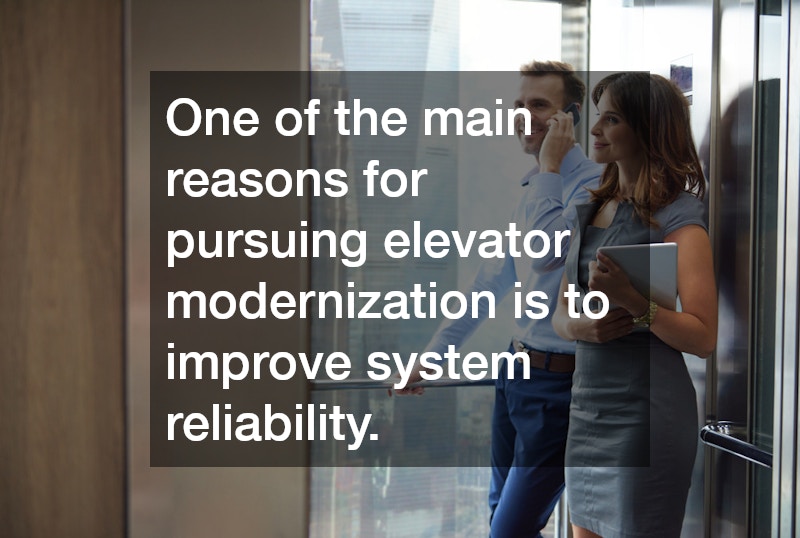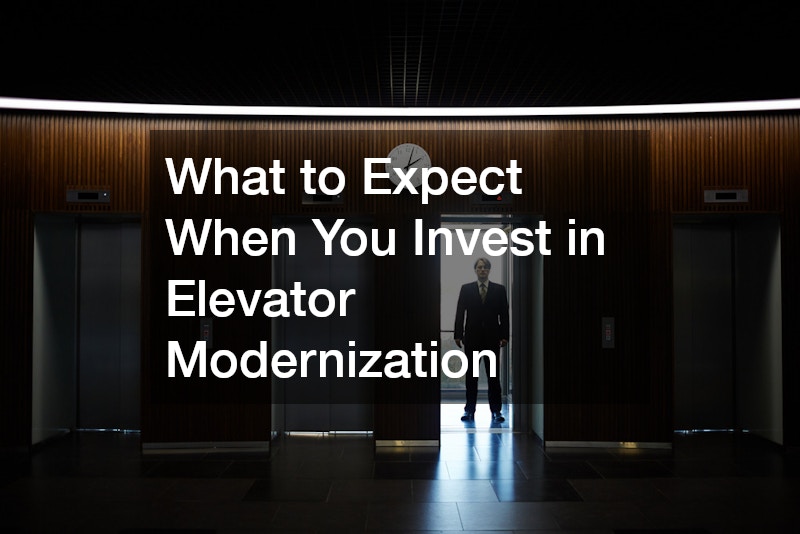Elevator modernization is a crucial investment for property owners and facility managers seeking to enhance the safety and efficiency of their buildings. As the infrastructure ages, upgrading the elevator system becomes necessary to meet current safety regulations and technological standards. Compliance with modern codes not only ensures safety but also enhances the building’s market value.
One of the main reasons for pursuing elevator modernization is to improve system reliability. Over time, the mechanical and electrical components of elevators can wear down, leading to malfunctions or even operational failures. Updated systems offer more reliable performance and fewer breakdowns, providing peace of mind for building owners and occupants alike.
In addition to reliability and regulatory compliance, modernization can significantly improve an elevator’s performance. Faster travel times, smoother rides, and improved energy efficiency are just a few benefits of upgrading to modern elevator technology. This investment can dramatically improve the user experience and satisfaction of everyone in the building.
Planning and Preparation for Modernization
Before you embark on an elevator modernization project, thorough planning and assessment are essential. Initial evaluations involve determining the current condition of your equipment and identifying specific areas in need of upgrades. Consulting with an experienced elevator contractor is a key step in this process, as their expertise will guide you toward the most efficient and cost-effective solutions.
A comprehensive modernization plan considers several factors, including the building’s current and future usage requirements. Elevator size, speed, capacity, and safety features need to align with projected changes in tenants or usage patterns. Engaging with all building stakeholders during this planning phase ensures that their needs and expectations are adequately addressed.
Preparation also involves establishing a budget and timeline for the modernization project. While the initial investment may seem substantial, the long-term benefits and potential energy savings can offset costs over time. Factoring in potential downtime and operational disruptions will also help minimize inconvenience to building occupants during the construction phase.
The Modernization Process
The elevator modernization process typically involves several key phases, from decommissioning existing systems to installing new equipment. During the decommissioning phase, outdated components are safely removed and disposed of, making way for new technology. This process requires precision and care to ensure that building integrity and user safety are maintained throughout.
Following the decommissioning, the installation phase involves integrating new systems such as control panels, motors, and safety features. Technological advancements in the elevator industry have led to innovations like smart, energy-efficient solutions that require specialized knowledge for proper implementation. Working with certified professionals guarantees that these systems are installed correctly and conform to all safety standards.
The finalization stage includes rigorous testing and inspection of the newly modernized elevator systems. Ensuring seamless integration of upgraded systems with the rest of the building’s infrastructure is crucial for successful project completion. Completion of the modernization process signifies the start of a new era of high-performance elevator services for your building.
Benefits of Elevator Modernization
Investing in elevator modernization comes with a myriad of benefits that enhance the overall building functionality. Improved energy efficiency is a standout benefit, often resulting in significant cost savings on electricity bills. Modern systems use advanced technology to reduce energy consumption and minimize environmental impact.
Modernization also enhances the longevity and sustainability of your elevator systems. Up-to-date components are not only more durable but are also supported by manufacturer warranties and service contracts. This can translate into reduced maintenance costs and extended service life, ensuring a better return on investment for property owners.
An often-overlooked benefit of modernization is the improvement in aesthetics and the user experience. Sleek, modern design elements, enhanced lighting, and intuitive controls can significantly elevate the perceived value of your building’s interiors. A refreshed, state-of-the-art elevator system can leave a lasting impression on tenants and visitors alike, contributing to increased tenant satisfaction and retention.
Choosing to invest in elevator modernization should be a strategic decision rooted in the unique needs of your building and its occupants. Understanding the benefits and stages of modernization can alleviate concerns and set realistic expectations for the process. With careful planning and guidance from industry experts, modernization can be a seamless transition to improved safety and efficiency.
While the modernization process involves upfront costs and planning, the long-term benefits of improved performance and reliability make it a worthwhile investment. By enhancing safety measures and integrating cutting-edge technology, modernized elevators contribute to the overall appeal and functionality of your building. Increased safety, comfort, and operational efficiency ultimately add value to your property.
As demand for energy-efficient and technologically advanced building systems grows, staying ahead of the curve with elevator modernization positions you as a forward-thinking property owner. This proactive approach not only attracts potential tenants but also critically enhances the overall reputation and standing of your building. By modernizing your elevator system, you invest in the future of your property, enhancing both its operational performance and market appeal.

